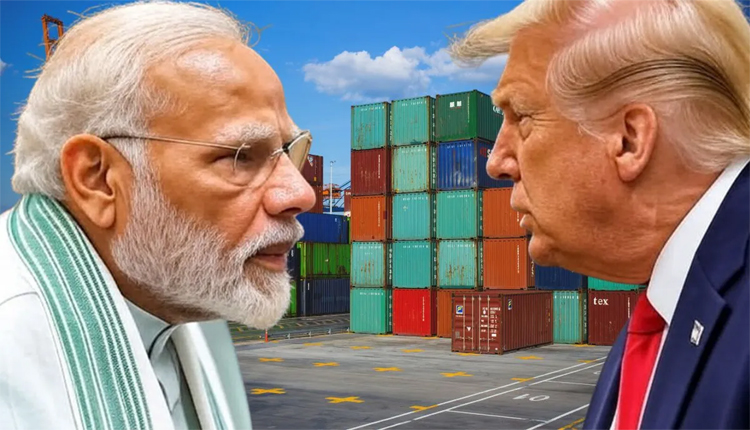New Delhi: Amid global trade turbulence sparked by the United States’ steep 50% tariffs on Indian exports, India’s Finance Ministry has struck a note of cautious optimism.
In its July Monthly Economic Review released on Wednesday, the ministry downplayed immediate alarm, asserting that the tariffs, while a challenge, are not a cause for panic. With India’s economy showing resilience and new reforms on the horizon, the Union government is banking on robust fundamentals and strategic trade diversification to weather the storm.
Tariff Trouble, But No Panic
The US tariffs, which include an additional 25% levy on top of an existing 25%, were imposed partly as a penalty for India’s continued purchase of Russian oil. This places India among a handful of nations facing Washington’s highest trade duties. The ministry acknowledges that the tariffs could dent economic growth by about 0.5% if sustained, particularly impacting exports and investments. Yet, it insists that the immediate hit to exports is limited, thanks to India’s diversified trade basket.
A Resilient Economy
Despite the US trade blow, India’s economic indicators paint a hopeful story. A recent upgrade in India’s sovereign rating by S&P signals growing global confidence in its economic stability. The ministry projects a GDP growth of 6.7% for April-June, surpassing the Reserve Bank of India’s 6.5% estimate, with official figures due on Friday.
Domestic demand remains strong, fueled by record e-way bill generation, a 16-month high in manufacturing PMI, and robust rural consumption boosted by a favourable monsoon. Inflation has eased to 1.6% in July, offering room for fiscal and monetary flexibility.
Strategic Trade Pivot
The stalled India-US trade talks have pushed New Delhi to pivot towards other markets. A freshly inked free trade agreement (FTA) with the United Kingdom, effective from July, aims to double bilateral trade by 2030. Commerce Minister Piyush Goyal revealed ongoing negotiations with the European Union, New Zealand, Chile, and Peru, with an FTA with Oman potentially concluding next month. However, the ministry cautions that these deals will take time to offset potential losses from the US market, where 66% of India’s exports— textiles, gems, jewellery, and shrimp— face the 50% tariff wall.
Reforms To The Rescue
The Finance Ministry is rallying both government and private sectors to absorb the tariff shock collaboratively, urging larger firms to shield smaller enterprises. Planned GST reforms, set to streamline tax slabs from four to two, promise to ease the burden on businesses and consumers alike. With a task force for next-generation reforms and a sovereign rating boost lowering borrowing costs, India is positioning itself to navigate this trade turmoil with agility.



Comments are closed.